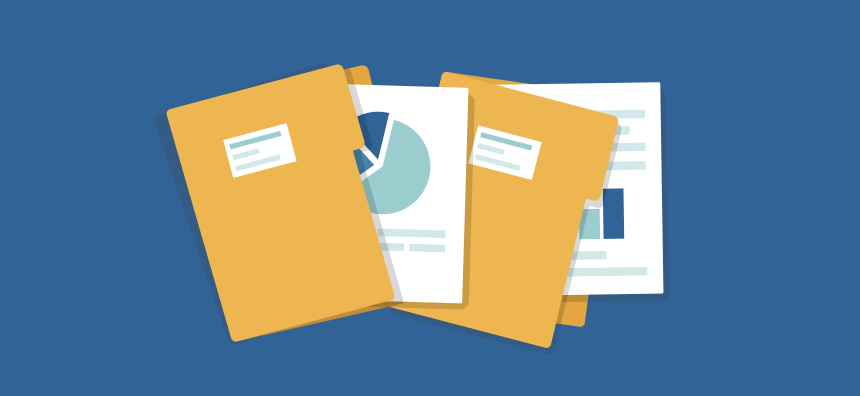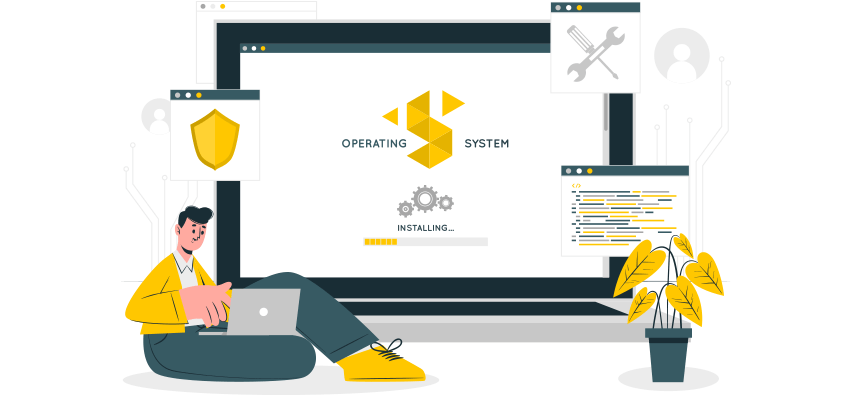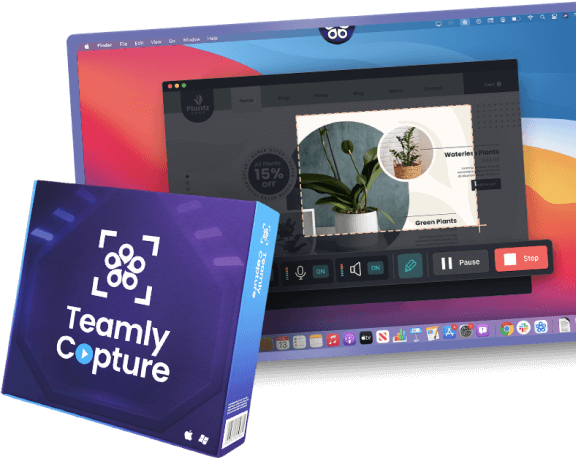Isn’t is a thrill when you land a big project with a new client? You run to the refrigerator, pop a bottle of champagne, and spend the rest of the evening soaking in the bliss of sheer success.
But before long, the project is complete. All the final deliverables are sent. You and the client part ways, and suddenly you’re left tapping your nails on your desk.
“What next?” you ask yourself. Is it time to hit the pavement, find new customers and drum up more sales? It’d be so much easier (and cheaper!) if the same clients just came back again and again.
But it’s too hard and gross to reach out to them. It feels awkward, like begging.
So clients slip away. They become like those BFFs you had in high school. At one point, you kept one another’s secrets, finished each other’s sentences, but as time wore on you grew further and further apart until you became like strangers. One after another, great clients are gone forever.
You probably know people whose entire business looks like a revolving door of clients coming in, leaving, then returning over and over again, always with a big smile on their face. How do they make it look so easy breezy?
The truth is, you can have this, too. With the right bag of tricks, you can reel in clients and keep them….for decades! Plus, they’ll rave to friends about how great you are.
Customer retention is just like building a friendship: it starts from when your customer first walks in the door. It’s about creating a seamless customer experience.
You only need a few strategies and practices and there isn’t a one-size-fits-all solution. It’s about you, what you’re comfortable with, your line of work and your brand.
Let’s look at 25 ideas and classic persuasion techniques to build an experience that customers want to return to, and to keep yourself relevant and in the loop so there’ll never be a final good-bye.

1. Build a Customer Arc
The best retention tactic is establishing a solid relationship with the client from day one. Crafting the employee experience is about building bridges at critical moments along the employee relationship arc.
Joey Coleman, author of Never Lose a Customer Again: Turn Any Sale into Lifelong Loyalty in 100 Days, says that all the customer’s beliefs and attitudes about you are formed within the first 100 days of doing business.
And so retaining customers starts with the onboarding process. In order to lay a good foundation, put systems into place that make this stage highly personal.
Although by now your business feels ordinary to you, see everything through the customer’s eyes. If they’ve just walked in the door to your salon, what do you want them to see, hear and even smell? Identify their most pressing questions, and be ready at hand to answer them.
If someone has already connected with you online, you already have a little window to make this first meeting extra personal. Ask about themselves, and explain anything in your business or service that might feel foreign to them.
If you’re a photographer, for example, all the equipment in the studio might look a little intimidating. Disarm them by explaining what everything is used for.
Customers have so many other options available to them, and so creating this strong foundation keeps them rooted in you and your services and increases the likelihood they choose to stay long-term.
2. Establish Rapport
The central objective to your business is to provide a top-notch service or product, for sure. But that isn’t a sufficient tactic for retaining customers. Building a customer experience is about going above and beyond.
Customer experience isn’t the same as customer service. Customer service is more reactive; it has to do with how a business deals with problems after they occur. Customer experience is proactive; it anticipates all the steps on the client journey and meets them along the way.
“If you don’t start things off on the right foot, it will be hard to overcome that first impression. If you do start things off strongly, you can build momentum to carry you deep into the relationship,” write Coleman in his aforementioned book.
Establishing rapport is crucial, as it bleeds into every aspect of the customer relationship. This is essentially about making the client feel welcome and happy to be working with you from the start
Rapport starts by building a welcoming environment. This makes a client feel enthused from the get-go. It entails creating an attractive space, offering them a place to sit and something to eat or drink.
It’s good to break the ice with some friendly topics that set a positive tone. As soon as you can, establish similarities. Finding something you have in common with the client is a sure way to draw them out and make them feel at ease.
Noticing body language is a subtle but effective way to communicate simpatico. Take seating, for example. Sitting across from someone communicates authority and command and control. Whereas sitting alongside someone communicates companionship.
Imitating gestures, including crossed arms or crossed legs, gives off signals of sympathy and warmth.
Building rapport is a skill that improves with time. When you have routines in place for new and existing customers, it allows everyone on the team to slide into a groove and jibe with the customer right away.

3. Share Your Expertise
Whether you’re a designer, artist or product manager, you’ve chosen your line of work in part because you have some panache for it.
Robert Cialdini, college professor and author of the book Influence: the Psychology of Persuasion, writes that establishing yourself as an authority in your field is one powerful tactic to entice customers.
When previous customers are convinced that you know what you’re talking about, they’ll want to return to you again and again.
Communication tools are integral to utilizing this customer retention strategy. Something like a newsletter or a Facebook page is an excellent opportunity for sharing your expertise and staying in your customers’ purview.
If you have a landscape business, for example, send out a newsletter with your best tips on how to weed and prune from season to season.
An interior decorator can share her perspective on design trends, and tricks for fixing the house up for special occasions.
When this content is consistent and helpful, your audience recognizes you as their go-to expert on the topic at hand. Plus, it’s easily shareable, and so may end up attracting new customers as well!
4. Be Upfront About Potential Snafus
Even with a thoroughly designed customer experience, so much of what happens throughout a project remains out of your hands.
If you’re in construction, for example, custom items can be delayed for days, which puts everything at a standstill. In interior design, you may have the color palate nicely laid out, only to have the fabrics arrive looking completely different from the sample, forcing you to shift gears
These sorts of things are normal, and they happen all the time. Unfortunately, there’s very little you can do about them. And they easily lead to dissatisfied clients—who may choose not to return to you for future services!
Letting the customers anticipate potential delays at the beginning of a project, however, helps to ease fear and frustration when the event occurs.
Creating a “How We Work” document clarifies your processes and methods and lets the customers know what they can expect from you.
Good things to include in the document are a visual outline of the project’s timeline, and a “Murphy’s Law” section that informs the client about anything that might hold the project up. Having them sign the document means they understand and agree to the entire process, snafus and all.

5. Establish “Former Client Only” Perks
Have you ever felt a little twinge of envy as you walked past the VIP room at a club, or felt like you “had” to buy a box of candy at the store when you realized the entire stock had sold out except for one or two boxes?
These are examples of another powerful persuasion strategy known as scarcity. When we realize that something is in short supply, or only available to a limited number of people, it makes us want it even more. Cialdini talks about this idea in Influence, where he discusses a study around people and their changing desire for cookies:
“Opportunities seem more valuable to us when their availability is limited…a cookie in short supply was rated as more desirable to eat in the future, more attractive as a consumer item and more costly than an identical cookie in abundant supply…a less available item is more desired and valued.”
This means that the way you present your products and services (not the services themselves) affects the price you’re able to put onto them!
Unleashing the scarcity principle is an effective strategy for retaining customers. There’s so many ways you could use it.
If you’re an artist, you can invite previous customers to a pre-show, where your art is sold at a special discounted price. Or you can send them an email with a coupon code that’s just applicable to returning clients. You can even have service packages that you only offer to returning clients.
When you treat your clients like the elite group that they are, they’ll notice. It makes them feel prized and valued, and they’ll keep coming back to you.

6. Design Customer Experience Around Value (Not Service)
Identifying the product or service your company provides is easy enough. If you’re a salon, you cut people’s hair. If you’re an interior decorator, you design homes.
But identifying the value of your service, and why customers come to you, is something else entirely.
For example, people don’t go to a nail salon simply to get their nails painted; the underlying reason is to luxuriate at the end of a long week. And people don’t go to a coffee shop for the caffeine (though this is a central reason, surely), but rather to complete work or meet with coworkers or friends.
Even if the nail service is superb, if the atmosphere isn’t relaxing, the client probably won’t come back. And if the coffee shop has poor seating or weak wifi, you’ll likely lose customers—even with the best coffee in town.
Once you’ve clearly identified the value of your service, the next step is creating copy and designing the client experience around the “why,” while continuing to provide a superb product or service.
For a salon, it’s about creating an “escape” feeling. For a coffee shop, it’s about creating a space with great seating and lighting that makes it easy to have a discussion or get work done. When a service fulfills people’s “why,” it makes them want to come back again and again.
If you’re struggling to clarify the value you provide, listen to your customers. What solutions are they identifying? Soliciting feedback is helpful here. Comments like, “This product brings me so much joy” means you’re providing an emotional need. While “This product helps me with my organization” means your product serves a practical purpose.
Once you know the “why” of your business, retaining customers means providing that…over and over again.
7. Reach Out at Appropriate Times
By the end of a six month project, you’ve spent a lot of time with a client; possibly even more time than you’ve spent with your family in the same time frame. And you’ve gotten to know them pretty well. Depending on the line of work, you may have even spent time in their homes and met their families. They’re almost like friends at this point.
Simply ending the relationship with the final deliverable, then, feels pretty abrupt. Just like a friendship, it’s only natural to follow up and check in on the client from time to time. This could be a quick email to tell them about something that reminded you of them, a Christmas card, or a note on their birthday.
If it feels awkward or salesey to reach out and continue the relationship, try seeing it from their point of view. If you’d just made a huge investment in someone’s services, would you want that person to reach out and connect with you?
When you’ve built strong rapport from day one, this gesture serves to continue the conversation. The client appreciates and remembers it.
8. Solve Their Problem, First and Foremost
When you’re strategizing to retain clients, bear in mind that no customer becomes a raving fan overnight.
Rather, a customer goes through a series of steps before developing loyalty to you and your services. Identifying and then solving their problem is key to winning them over.
If you’re a photographer, maybe they’re looking for a portrait of their newborn, or a series of professional shots for their website or social media. Or if you’re a software developer, maybe the client’s objective is to increase sales on their e-commerce store with a more fluid checkout service.
Whatever it may be, keep your eye on achieving this objective. Once you’ve reached this milestone, they understand your capacity to provide value and solve their problems. You’re in a key position at this point to ask for referrals, solicit feedback, and tell them about other services you provide.

9. Ask Why They Didn’t Come Back
Some fish get away, and any business owner just has to accept that. However, every client, particularly those who choose to end a business relationship, provides a rich opportunity for you to learn about how your style affects customers.
Maybe they were turned off by you in some way. Or maybe another product on the market served their needs better. But unless you ask, you’ll never know.
Reach out directly with a survey, or just send an email, asking questions such as: “How was your experience working with me?” and “I’d like to know what I could have done differently.”
Since they’re undoubtedly busy with other things, enticing them with a gift card is one way to get the wheels turning.
Each case is unique, but after you’ve received a lot of feedback, you’ll see patterns in how people feel about you. The key to client retention is using this feedback to re-shape and update your approach.
10. Mitigate Buyers Remorse
Whenever any of us spends a lot of money, a little voice in our head asks, “Should I really have done that?”
If it takes awhile for the product to arrive or the project to get going, this only gives us more time to worry and stew. The voice gets louder, asking us if the purchase was really necessary, and whether there was a smarter way to have spent the money.
We’re looking for an indication that we’ve gone in the right direction, or whether we should change course.
As a business owner, recognize this phase in the customer journey. If there’s some lag time between when the contract is signed and the project gets rolling, reach out to the client. Send a note thanking them for choosing you, with assurance you’ll take great care of them.
This gesture settles their nerves and reminds them of all the reasons they picked you in the first place. It fosters the positive customer experience you’re working to create.
11. Know Everyone on the Client Team
Oftentimes, you’re working with a team and not one individual client. Each person has a different role in their organization and distinct decision making powers.
Take some time getting to know the structure of the company, and the role each member plays. This allows you to communicate with the right people throughout a project.
And after a project has ended, having this breadth helps with client retention. It lets you pitch new products and services to the right people.
Finding the right ear to bend is oftentimes the key to returning business. If you reach out to the wrong person, it may well fall on deaf ears.

12. Offboard With Grace
When a client decides to discontinue services with you, at first it may feel like an affront. You wonder what you did wrong and who they’ve found to replace you.
This needn’t be seen as a brush off, however. There’s all sorts of reasons for why someone chooses to move on. Maybe they need to cut costs and plan to do things themselves for a time, or they simply don’t need your services anymore.
A professional approach to offboarding seeks to maintain a positive connection. This keeps the door open in the event they want to return. Building this bridge entails having protocol in place so you’re able to gracefully say goodbye.
Here are a few things a client offboarding system might include.
- Give a Heads-Up
Let the client know ahead of time that your services are due to end. Break down everything you’ve provided during your time working for them. Thank them for their patronage and mention you’re open to talk about the relationship going forward.
- Provide How-tos
If you’ve been working for this client for some time, you may have taken the reins on all sorts of things, from email, to social media, to the company blog. Send documents or videos with instructions on all the tasks you completed for the client. For example, if you managed their Instagram account, you might include instructions on writing captions or creating stories.These tutorials allow the client to repeat the process themselves, or train someone else to.
- Send a Goodbye Email
Send a friendly goodbye message. Be sure to include all the details about various accounts you administered, so the client is able to change passwords.
- Solicit Reviews
Your clients are a valuable resource for your company. They’ve seen how you work first-hand. Asking them to provide reviews of your services enables you to promote yourself elsewhere. Some helpful questions include: “What did you like best about my services?” and “What was it like to work for me?”After you’ve done this a few times, it’s easy to develop a template of questions that works for you.
When you’ve received these reviews, be sure to put them in prominent places on your website and other marketing materials.
- Send Follow-Up Emails
Touch base with the client once or twice over the following months, letting them know about any new services and specials you’re offering. Their life is very busy, so without this reminder they may not think to reach out to you again.In sum, taking the time to offboard with grace lets the client know you appreciate all of their patronage, and keeps the door open should they decide to return. Even if they don’t require your services again, your professional behavior makes it likely they’d recommend you to someone else.
13. Send a Handwritten Thank You Letter
Even though technology is the current way of doing things, certain antiquated practices haven’t yet gone out of style. After the final goodbyes, and the project files are all closed and put away, it’s nice to reach into your desk and pull out some old-fashioned pen and paper. Write a personal thank you to the client, letting them know what you enjoyed about the project, and wish them the best.
It’s so rare to receive a written thank you nowadays, and this gesture will really make you stand out in the client’s eyes. To ensure you have their address, ask for it as part of the onboarding process.
These little things count. Sending a personal thank you communicates you value the client as an individual. And they remember you for future projects.

14. Provide Before and After Images
At the end of a long project, it’s really hard for anyone to remember just how far you came and how much work you did. Finding ways to remind your customer of the benefits and improvements you provided is a powerful reminder of how valuable you are.
For example, if you’re an interior decorator, click a few pictures of the area before you work your magic. Then, take another round of photographs after the final curtain is hung, the backsplash is in place and everything sparkles.
When these before and after photos are presented to the client in an album (with your logo on the front!), they’ll be blown away to see how much you accomplished. They’ll love pulling it out and showing off your work to friends. And that turns into free advertising for you!
Or if you’re a hairstylist, take before and after photos of your clients, and set up an Instagram account to show off your skills.
By communicating your value to clients, you’re giving them a ready reason to reach out when they need your services again.
15. Wow Them With Deliverables
What if you took the time to make a scrumptious steak dinner, with all the fixings, including potatoes, salad, and wine, but then served it on paper plates with dixie cups? The meal may taste great, but the presentation would really take away from the overall effect.
In the same way, when you’ve produced a top-notch final deliverable, put in an extra oomph to present it with elegance and elan.
This could look a lot different depending on your service, but make the event as “red carpet” as possible. Bring the whole team together, and pop some champagne to celebrate the final unveiling.
If you’re an interior designer, talk the family into taking off for the weekend as you install the final touches, then dress up the area with flowers and streamers to celebrate crossing the finish line.
If it’s a software release, bring all the stakeholders together to show off the features you’ve created, with some before and after images to demonstrate how far you came.
The client has put a lot of resources into reaching this milestone, and so elevating the experience affirms their dedication. Creating this “wow” factor leaves them thrilled, and as pleased as punch to have done business with you.

16. Use Social Media to Build the “Like Know Trust” Factor
They say you need to see an advertisement seven times before you’ll go ahead and buy something. Retaining customers follows a similar principle.
When a client sees you popping up in their Twitter feed, or photos of your new projects on Facebook or Instagram, it keeps your business front of mind.
It also creates an everyday familiarity to your brand and personality. When all is said and done, people choose to do business with someone who they like, know and trust.
Consistently engaging on social media lets people in on who you are. And the next time they need your services, they’re more likely to pick you over someone they’ve never met before.
17. Utilize Social Proof Persuasion
Did you ever make an online purchase that hinged on a single review? Maybe someone wrote how an album was the best they’d ever heard, and that was enough to tip the scale and get you to click the “buy” button in the checkout page.
Another key persuasion method that Cialdini writes about is social proof. We’re wired, he says, to look to others for cues on how to behave. When we see people buying the latest coffee maker, for example, we determine there must be something to the trend, and we go and get one ourselves.
This is an effective tactic for client retention as well. Staying in contact with former clients allows you to share the new projects you’re working on. Things like Facebook pages, a newsletter, or Instagram are all excellent ways to show off work you’re proud of and share client feedback.
Your former clients come to see how valuable you are in the eyes of others, and this “social proof” persuasion inclines them to return and do business with you.
Maybe this sounds like boasting, but really it’s not. If you’ve helped another person and done your best work, it means others would benefit as well. So don’t be shy! Put your work out there.
18. Adapt to Address Future Needs
The English biologist Charles Darwin is credited with saying that “it’s not the strongest of the species that survives, nor the most intelligent. It is the one that is most adaptable to change.”
Trends change rapidly in pretty much any line of work. If you work in interior design, what was in style ten years ago now looks passé. In technology, trends change even faster.
Taking your eye off the ball means a swing and a miss. Too many whiffs, and you’ve struck out. Your former clients look to your competitors for business.
Retaining clients means providing relevant services and products. Staying on top of your game entails ongoing education and revising your services. If you’re a website designer, learn a new software language to broaden your skill set. If you’re an interior designer, attend kitchen and bath expos to stay abreast of seasonal colors and trends.
Communicating these upgrades in newsletters and on social media lets everyone know you’re staying relevant, and you’ll be seen as the go-to person for cutting edge services and products.

19. Learn From Existing Customers
Your current clients can teach you a lot of tips and strategies for client retention.
Solicit their feedback at various stages of the customer journey. One way to do this is by sending out surveys periodically to ask how things are going, what they like about working with you, and areas you could improve.
When you ensure this feedback is anonymous, it gives your customer the space to freely speak their mind.
This in-the-moment feedback is so helpful. You may detect patterns in what you receive. For example, people may rave about your onboarding process, but consistently cite problems with communication during later stages of the project.
This method not only keeps your finger on the pulse of current customers, but it identifies areas to improve, which is key to increasing future retention rates.
20. Unleash Reciprocity Persuasion With Gifts
Do you ever receive a birthday card from a friend, and you immediately mark the calendar to make sure you’ll remember their birthday in return?
This is a classic example of what (yes, we’re going to mention him one final time) Cialdini refers to as reciprocity persuasion. We’re all inclined to return favors. One good turn deserves another, as they say. When our neighbor spends a hot summer day helping us lay shingles onto the roof, that very autumn we’re heading over to his place to lend a hand cleaning leaves out of gutters.
This principle can work its way into your customer journey in so many ways. Providing your customer with an unexpected gift unleashes the reciprocity principle: they’ll feel obligated to return the favor to you.
Coleman discourages giving gifts with your logo on it, as this is really about creating advertising for you. He writes:
“The best presents are meaningful and personalized. They exhibit a level of care and consideration commensurate with the relationship…you don’t need to break the bank. Just ask yourself what you’d get your favorite sibling or your best friend if they were your customer.”
If you’re a photographer, you can frame your best portrait shot and mail it to them. This wouldn’t be a huge extra cost to you, but the touching gesture would mean a lot to them. Or if you’re a salon owner, occasionally giving customers a complimentary bottle of their favorite shampoo makes them feel special and appreciated.
21. Develop Protocol for Communication and Status Updates
Providing your clients with optimal customer experience means keeping them in the loop.
Projects tend to get busy and complicated, and it’s easy to drop the ball from time to time. However, in order for the client to know you’re continually working hard for them, they need to hear from you consistently.
Having protocol in place helps create this continuity. Outline a style guide that includes dos and don’ts for the team. Then, find out how the client prefers to communicate and let them know they can always reach out.
Most projects work in fits and starts. For a few weeks you’re really crunched for time, and then things almost come to a standstill as you wait for paint to dry or custom items to be built. Let the client know that you’re still burning oil for them during the slow period. A simple message like, “Just sent out the order for backsplash tiles today,” keeps them updated and informed.
When you have a system in place, you won’t forget to send those critical texts or emails that let clients know you’re thinking about them, even when your day is full of to-dos.
Providing this solid customer experience is what client retention is all about. It will repay you.
22. Run Through the Finish Line
At the end of a project, your client may not even remember anything about the onboarding process. What leaves the most searing impression, rather, are their final exchanges with you.
Going above and beyond with final deliverables ends the relationship on a high note.
For example, if you’ve designed a website, extend your services for 30-60 days past the launch to fix any bugs and make sure everything is up and working. Let the client know that the door is always open regarding repairs on a deliverable.
By creating this solid final impression, you’re giving the client all the reason in the world to return again soon.

23. Communicate With Clients Like Family
If your marketing assures the client that you’ll take care of them like family, then don’t be hesitant to treat them like family (in the best sense, of course).
Look for opportunities to sit down and shoot the breeze with them, letting them know you value them as a person. Find out when their birthday is, and always acknowledge it with a friendly card. And when you send messages, don’t be shy about sending a video message rather than a text or email.
Not only is a video more personal, but it’s a much stronger form of communication. Videos pick up things like voice inflection, tone, and non-verbal communication, all of which can easily be lost in text and emails.
When the project is complete, the client feels like they’re saying goodbye to a family member, and so will be sure to get back in touch with you when they need it.
24. Change Approach Depending on the Customer
Developing a great client experience isn’t a one-size-fits-all approach.
Everyone’s a little different, as you’ve undoubtedly come to appreciate about your clients. Some people yuk it up like they have all the time in the world, while others speak on the phone only when it’s absolutely necessary.
By reading clients individually, you’re able to gauge their needs and adjust your approach. If you work in a nail salon, for example, identify right away if the client wants to gab, or if they are looking for a quiet space to check out for a while.
Keeping notes on their personality and communication preferences allows you to maintain the rapport when the client returns for your services after a spell. This way, all you have to do is pull out your file, and you can recall all sorts of things about their preferences.
Providing this personalized boutique service lets the client know you see them as an individual, and they’ll repay you with repeat service.

25. Strategize the Discovery Call
The discovery call is a critical moment for establishing an ongoing professional relationship. Rather than winging it, going in with a plan allows you to establish strong rapport with the client from the get-go.
Before the call, research as much as you can about the client. If you have an online application form, include questions about his or her background. Look into the company they represent, and the industry. This gives you a head start on their niche and key competitors.
Most importantly, go into the discovery call planning to have a friendly, agreeable conversation. To that end, here are a few tips and ideas.
- Find Common Ground
When you have something in common with someone, it’s easy to chat away with them for hours. Establishing rapport with a new client can be as simple as identifying that you have kids the same age, or enjoy similar leisure activities.
- Be Agreeable
When you have only a short timeframe to create a favorable impression, making a conscious effort to be agreeable goes a long way.If the client says they love football, go with it, even if you don’t. Mention memories of tailgate parties in college. Congeniality generates a positive tone that allows conversation to flow.
- Adjust the Thermostat
Understanding the personality of the new client right away helps to make the discovery call effective. Maybe they’re taciturn, and don’t want to make the conversation personal. Or maybe their life is an open book, and would love to talk about anything and everything.Building a friendly, open relationship requires constantly reading the temperature of a conversation and making tiny adjustments, if necessary.
If you sense that someone is intimidated by your approach, then scale it back. If they indicate they want to go in a certain direction, then let the conversation flow off course for a little bit.
The discovery calls get easier the more you do them. But being engaged and having your head in the game really sets the tone for the entire project, and the relationship beyond.
Conclusion
Simply providing a quality service or product isn’t enough to keep customers coming back. Client retention is about creating an experience that customers want to return to.
The customer experience starts from when the customer first meets you, and entails establishing rapport, then identifying their problem and solving it. It goes above and beyond by delivering a boutique service individualized to their needs.
Retaining clients needn’t be a conundrum, or smarmy. It’s well within anyone’s reach, and is about identifying techniques that work for you.
Using classic persuasion methods such as scarcity, social proof and authority maintain your allure with former clients. Letting them know you’re an expert in your field and that other customers rave about you establishes you as an authority in their eyes. Treating former clients like an elite group makes them feel like VIPs for doing business with you.
It’s more economical to put energy into retaining clients rather than finding new ones. If your business suffers from a “leaky bucket syndrome” and you feel that your clients keep slipping away, then work on creating an optimal customer experience.
Maintaining friendly and professional relationships with customers doesn’t simply end with them. As Coleman writes, when you have a devoted customer, “they develop into a built-in, unpaid, uncommissioned marketing representative, singing your praises far and wide to other potential customers who might benefit from your product or service.”
With the right mix of client retention strategies, you can amass a large group of professional BFFs who not only patronize you, but gush about you as well.
What’s your go-to technique for developing a team of unpaid cheerleaders out in the world, advocating your services and brand?



























































